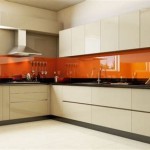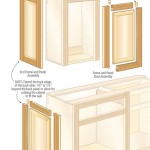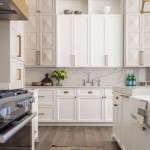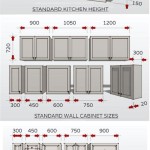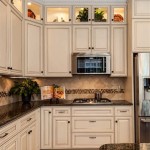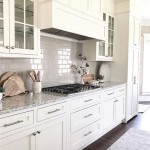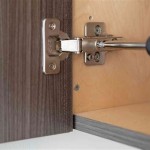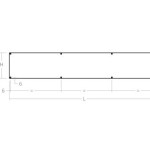Kitchen Cabinet Refurbishment: A Comprehensive Guide
Kitchen cabinet refurbishment represents a cost-effective and sustainable alternative to complete kitchen remodels. Rather than replacing existing cabinetry, refurbishment focuses on updating the appearance and functionality of the existing structures. This approach can significantly reduce project costs, minimize disruption to the household, and lessen the environmental impact associated with demolition and new construction.
The scope of a kitchen cabinet refurbishment project can vary widely, ranging from simple cosmetic improvements to more extensive structural repairs and modifications. The specific techniques and materials used will depend on the condition of the cabinets, the desired aesthetic outcome, and the homeowner's budget. Careful planning and preparation are essential for a successful refurbishment project.
Assessing the Condition of Existing Cabinets
The initial step in any kitchen cabinet refurbishment project is a thorough assessment of the existing cabinetry. This assessment should identify any structural damage, such as warping, rot, or loose joints. It should also evaluate the condition of the existing finish, noting any scratches, dents, fading, or peeling. The hardware, including hinges, knobs, and pulls, should also be inspected for wear and tear.
Structural damage, if present, will need to be addressed before any cosmetic work can begin. Minor repairs, such as tightening loose screws or filling small cracks, can often be handled by the homeowner. More extensive damage, such as warped doors or rotted frames, may require the expertise of a professional carpenter.
The condition of the existing finish will determine the appropriate refurbishment techniques. If the finish is in relatively good condition, a simple cleaning and polishing may be sufficient. However, if the finish is heavily damaged or outdated, it may need to be stripped and refinished. The type of material used for the cabinets - wood, laminate, or metal - will also influence the choice of refinishing products and techniques.
A detailed inventory of all necessary repairs and upgrades should be compiled during the assessment phase. This inventory will serve as a roadmap for the refurbishment project and will help to ensure that all necessary materials and tools are acquired before work begins.
Refurbishment Techniques and Options
Several techniques and options are available for refurbishing kitchen cabinets, each with its own advantages and disadvantages. The choice of technique will depend on the condition of the cabinets, the desired aesthetic outcome, and the homeowner's budget and skill level.
Cleaning and Polishing: This is the simplest and least expensive option, suitable for cabinets with a relatively new or undamaged finish. A thorough cleaning can remove dirt, grease, and grime, while polishing can restore shine and luster. Specialized cleaning products are available for different types of cabinet finishes, such as wood, laminate, and metal.
Painting: Painting is a popular option for updating the appearance of kitchen cabinets. It allows for a wide range of color choices and can completely transform the look of a kitchen. Proper preparation is essential for a successful paint job, including cleaning, sanding, and priming the surfaces. High-quality paint specifically designed for cabinets should be used for durability and a professional-looking finish.
Refacing: Refacing involves replacing the existing cabinet doors and drawer fronts with new ones, while leaving the existing cabinet boxes in place. This option can provide a more dramatic transformation than painting, as it allows for changes in door style and material. Refacing typically requires the expertise of a professional installer, as precise measurements and careful installation are crucial.
Restaining: Restaining is an option for cabinets made of solid wood. It involves stripping the existing finish and applying a new stain to change the color of the wood. Restaining requires careful preparation and application to achieve a consistent and even finish. This option is best suited for homeowners with experience in woodworking and finishing techniques.
Replacing Hardware: Simply replacing the existing hardware, such as knobs, pulls, and hinges, can significantly update the look of kitchen cabinets. A wide variety of hardware styles and finishes are available to suit different tastes and budgets. This is a relatively inexpensive and easy way to refresh the appearance of existing cabinetry.
Adding Decorative Elements: Decorative elements, such as molding, trim, and decorative panels, can be added to kitchen cabinets to enhance their appearance. These elements can be used to create a more ornate or traditional look, or to add visual interest to plain cabinets. The addition of decorative elements may require some carpentry skills and the use of specialized tools.
Preparation and Execution
Proper preparation is crucial for a successful kitchen cabinet refurbishment project. This includes protecting the surrounding areas, preparing the cabinet surfaces, and gathering the necessary materials and tools. Rushing the preparation process can lead to subpar results and increased frustration.
Protecting the Work Area: Before beginning any work, the surrounding areas should be protected from dust, paint, and other debris. This can be done by covering countertops, floors, and appliances with drop cloths or plastic sheeting. It is also advisable to ventilate the work area to minimize exposure to fumes from cleaning agents, paints, and stains.
Preparing the Cabinet Surfaces: The cabinet surfaces must be properly prepared before any refinishing work can begin. This typically involves cleaning, sanding, and priming the surfaces. Cleaning removes dirt, grease, and grime, while sanding smooths out imperfections and creates a better surface for adhesion. Priming creates a uniform surface and helps the finish to adhere properly.
Gathering Materials and Tools: All necessary materials and tools should be gathered before starting the refurbishment project. This includes cleaning agents, sandpaper, primer, paint or stain, brushes, rollers, drop cloths, and safety equipment. Having all the necessary materials on hand will help to ensure a smooth and efficient work process. A detailed list of materials and their estimated costs should be prepared beforehand to manage budget effectively.
Execution of Refurbishment Technique: The execution of the chosen refurbishment technique should be carried out carefully and methodically. Following the manufacturer's instructions for all products is essential for achieving the desired results. Multiple thin coats of paint or stain are generally preferable to a single thick coat, as they are less likely to drip or sag. The time required for each step should be considered and factored into the overall project schedule. Proper drying time is crucial to ensure the quality of finish.
Hardware Installation: If new hardware is being installed, it should be carefully aligned and secured. Templates and guides can be used to ensure consistent placement of knobs and pulls. Damaged or stripped screw holes should be repaired before installing new hardware. Consider the overall design and aesthetic when selecting and installing new hardware.
Cleanup: After the refurbishment work is complete, the work area should be thoroughly cleaned. All drop cloths and plastic sheeting should be removed and disposed of properly. Any spills or splatters should be cleaned up immediately. Proper disposal of waste materials is essential for environmental responsibility.
Refurbishing kitchen cabinets is a viable option for homeowners looking to update their kitchens without the expense and disruption of a complete remodel. By carefully assessing the condition of existing cabinets, selecting appropriate refurbishment techniques, and meticulously preparing and executing the work, homeowners can achieve a significant improvement in the appearance and functionality of their kitchens.
Cost-benefit analysis should be considered beforehand. Depending on the extend of work needed, it could be more economical to replace the kitchen cabinet instead of refurbishing.
Ultimately, the decision to refurbish or replace kitchen cabinets depends on a variety of factors, including budget, time constraints, and the desired aesthetic outcome. A comprehensive evaluation of these factors is essential for making an informed decision.

Cabinet Refinishing An 8 Step Guide For Pro Painters Ppc

Cabinet Refinishing Guide

Refinishing Kitchen Cabinets Modern Refacing Made Easy Wisewood

Kitchen Refurbishment Matt Finish Respray Ltd

How To Refinish Cabinets Like A Pro

Cabinet Refacing Vs Painting Which Is Right For You

Best Kitchen Cabinet Refacing For Your Home The Depot

Cabinet Refinishing N Hance
Refinishing Kitchen Cabinets A Beautiful Mess

The Fast Affordable Way To Upgrade Your Kitchen Cabinet Refinishing
Related Posts

